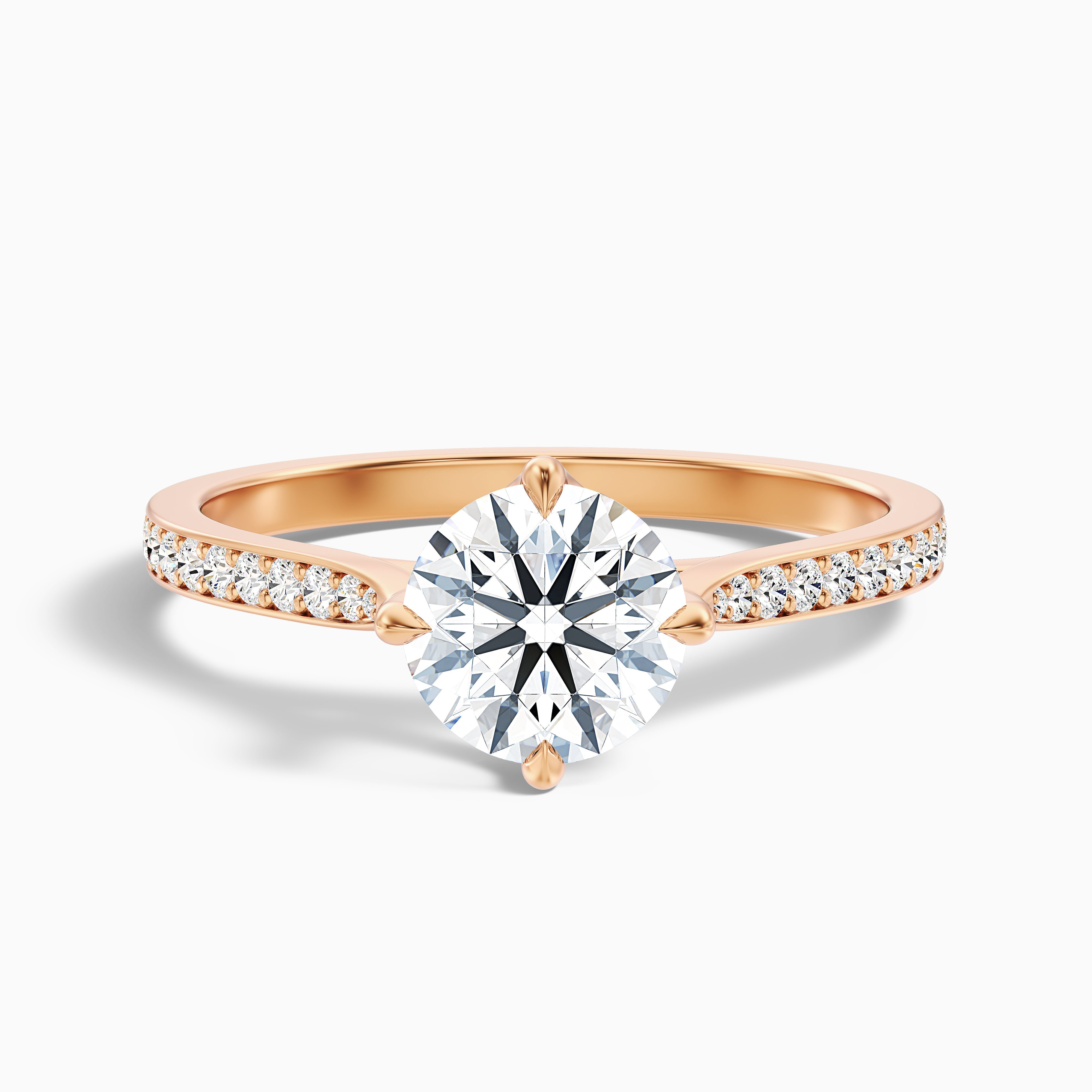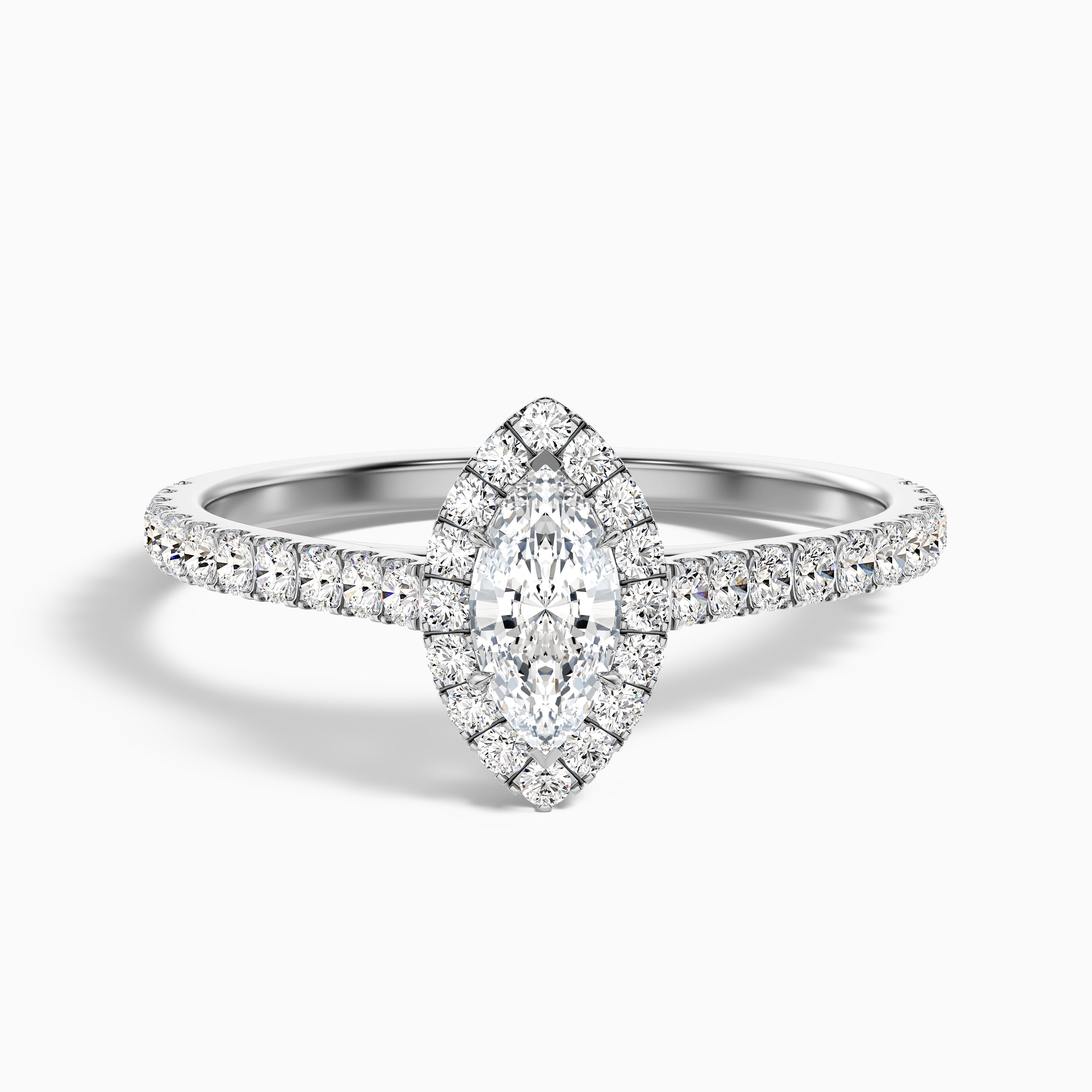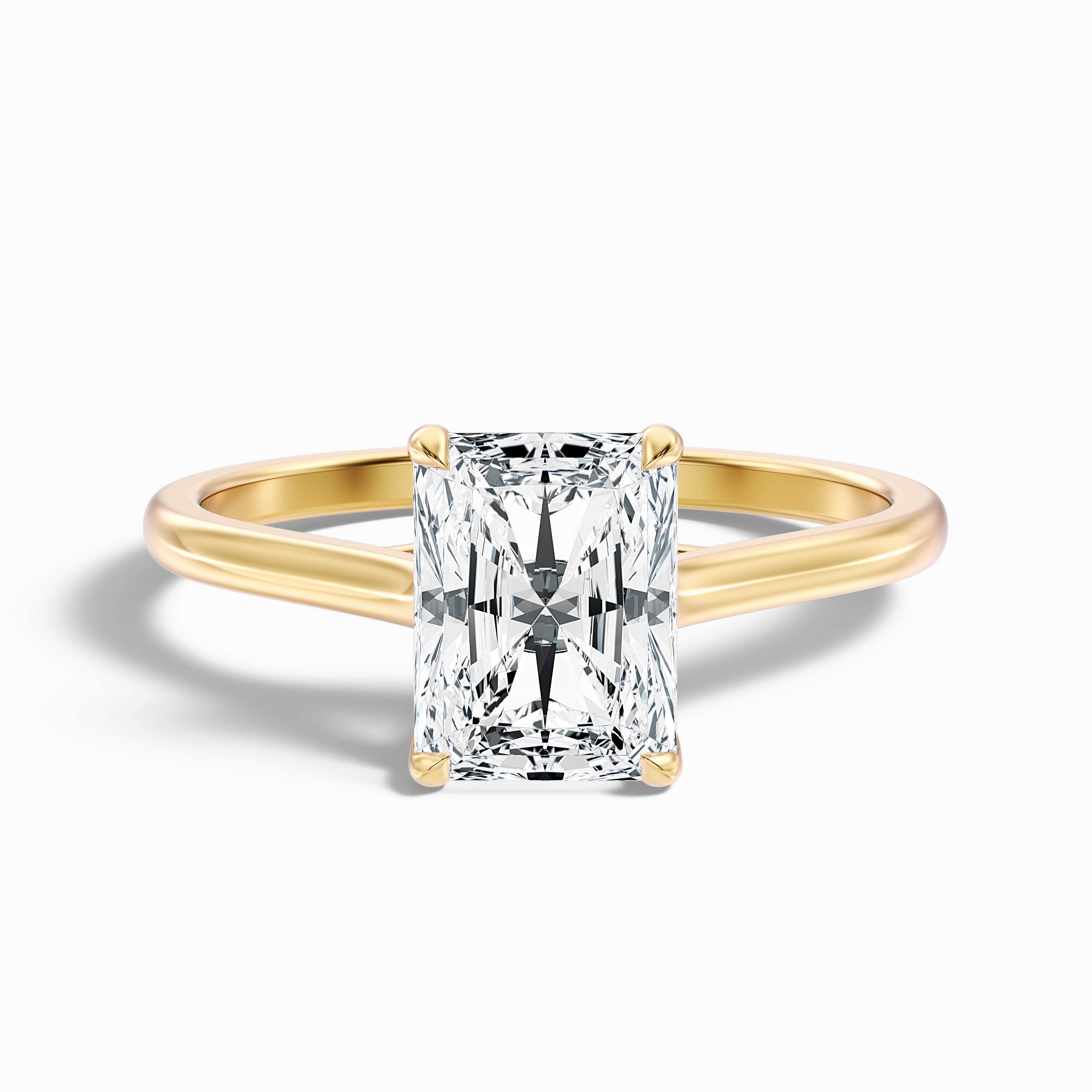Price Comparison: Moissanite Vs. Lab Created Diamonds
If you're shopping for an engagement ring, wedding band, or any fine jewelry, you’ve probably heard about Moissanite and lab created diamonds. Both are popular alternatives to mined diamonds, but their prices can vary a lot. This guide will break down the costs of each so you can decide which one fits your budget and style.
We’ll look at how much Moissanite and lab grown diamonds cost at different sizes and qualities, what makes their prices different, and which one might be the better deal for you.
What is Moissanite?
Moissanite is a gemstone that’s grown in a lab, made from silicon carbide. It was first discovered over a century ago by a French scientist named Henri Moissan, who found tiny particles of it in a meteor crater. At the time, it was believed to be a diamond because of its incredible sparkle, but further research revealed it was something entirely different from silicon carbide.
What makes Moissanite stand out is its exceptional brilliance. If you’ve ever seen a Moissanite ring under light, you’ll notice how much it sparkles. It has a refractive index higher than that of diamonds, meaning it bends light in a way that creates a dazzling rainbow effect. Beyond its brilliance, Moissanite is also incredibly durable. It ranks 9.25 on the Mohs scale of hardness, just below diamonds, which makes it suitable for everyday wear.
Another reason Moissanite has become a go-to choice for many people is its affordability. Compared to natural or even lab created diamonds, Moissanite costs significantly less while still offering a luxurious look. Its combination of beauty, toughness, and lower price tag has made it a favorite alternative to traditional diamonds.
What are Lab Created Diamonds?

Lab created diamonds, as the name suggests, are diamonds that are made in a laboratory instead of being mined from the earth. The process involves replicating the conditions under which natural diamonds form, high pressure and high temperature (HPHT) or chemical vapor deposition (CVD). These methods allow scientists to grow diamonds that are chemically and physically identical to their natural counterparts.
One of the biggest draws of lab created diamonds is their ethical and environmental benefits. Mining natural diamonds can have serious consequences for ecosystems and communities, but lab grown options eliminate those concerns. Plus, they tend to be more affordable than natural diamonds, though they cost more than Moissanite.
Over the past decade, lab-created diamonds have gained popularity not just for their ethical appeal but also because they offer the same look and feel as natural diamonds. For someone who wants the classic diamond aesthetic without the hefty price tag or moral dilemmas, lab created diamonds are an excellent choice.
Related Read: Lab Grown Diamonds Vs Natural Diamonds: All You Need To Know
Price Factors Affecting Moissanite and Lab Created Diamonds
When comparing the prices of Moissanite and lab created diamonds, several factors come into play:
Carat Size
The size of the gemstone is one of the most obvious influences on price. Larger stones generally cost more, whether you’re looking at Moissanite or lab created diamonds. However, the rate at which prices increase isn’t the same for both. Moissanite tends to follow a gentler curve, meaning doubling the carat size doesn’t double the price. With lab created diamonds, the price jump can be steeper because their value is tied more closely to rarity and production costs.
Cut, Color, and Clarity
For lab created diamonds, these three Cs (cut, color, and clarity) matter a lot. A well cut diamond with minimal inclusions and a near colorless appearance will command a higher price. On the other hand, Moissanite’s pricing isn’t as heavily influenced by these factors. Most Moissanite stones are eye-clean and come in a limited range of cuts and colors, so there’s less variation in cost based on quality grades.
Brand and Certification
Brands play a role in pricing too. Some companies charge a premium simply because of their reputation or marketing strategies. Additionally, certifications like GIA or IGI reports add value to lab created diamonds, whereas Moissanite doesn’t typically require such documentation since it’s always lab grown.
Manufacturing Processes
The way each gemstone is made impacts its price as well. Producing Moissanite involves fewer steps and materials compared to growing diamonds, which contributes to its lower overall cost. Lab created diamonds require advanced technology and significant energy, driving up their price point.
Price Comparison by Carat and Quality
Let’s break down the numbers to get a clearer picture of how Moissanite and lab created diamonds stack up against each other.
Small Stones (Up to 1 Carat)
For smaller stones, Moissanite is notably cheaper. A 1 carat Moissanite stone might cost anywhere from 200 to 500, depending on the retailer and cut. In contrast, a 1 carat lab created diamond could range from 800 to 1,200, depending on its quality grade.
| Carat Size | Gemstone Type | Color Grade | Clarity Grade | Approximate Price Range |
|---|---|---|---|---|
| 0.5 Carat | Moissanite | Near Colorless | Eye-Clean | $150 − $300 |
| 0.5 Carat | Lab Created Diamond | D-E (Colorless) | VVS1-VVS2 | $400 − $800 |
| 1 Carat | Moissanite | Near Colorless | Eye-Clean | $300 − $500 |
| 1 Carat | Lab Created Diamond | D-E (Colorless) | VVS1-VVS2 | $800 − $1,200 |
Medium Stones (1 to 2 Carats)
As you move into the 1.5 to 2 carat range, the price gap widens. A 1.5 carat Moissanite might set you back around 600 to 800, while a similar-sized lab-created diamond could cost 1,200 to 2,000. The difference becomes even more pronounced as the carat weight increases.
| Carat Size | Gemstone Type | Color Grade | Clarity Grade | Approximate Price Range |
|---|---|---|---|---|
| 1.5 Carat | Moissanite | Near Colorless | Eye-Clean | $400 − $600 |
| 1.5 Carat | Lab Created Diamond | D-E (Colorless) | VVS1-VVS2 | $1,500 − $3,000 |
| 2 Carat | Moissanite | Near Colorless | Eye-Clean | $600 − $800 |
| 2 Carat | Lab Created Diamond | D-E (Colorless) | VVS1-VVS2 | $1,200 − $2,000 |
Large Stones (Above 2 Carats)
For larger stones, the disparity in pricing becomes stark. A 3 carat Moissanite might cost 900 to 1,300, whereas a 3 carat lab created diamond could easily exceed $2,000. This makes Moissanite a far more budget-friendly option if you’re looking for a statement piece.
| Carat Size | Gemstone Type | Color Grade | Clarity Grade | Approximate Price Range |
|---|---|---|---|---|
| 2.5 Carat | Moissanite | Near Colorless | Eye-Clean | $700 − $900 |
| 2.5 Carat | Lab Created Diamond | D-E (Colorless) | VVS1-VVS2 | $1,800 − $3,000 |
| 3 Carat | Moissanite | Near Colorless | Eye-Clean | $900 − $1,300 |
| 3 Carat | Lab Created Diamond | D-E (Colorless) | VVS1-VVS2 | $2,000 − $3,500 |
To illustrate this, imagine you’re shopping for an engagement ring. You find a 2 carat Moissanite ring for $500. A comparable lab created diamond ring would likely cost at least three times as much. While the visual impact may be slightly different, the savings are hard to ignore.
Pros and Cons of Moissanite Vs. Lab Created Diamonds
Both Moissanite and lab created diamonds have their advantages and drawbacks. Here’s a closer look at what sets them apart:
Moissanite Pros
- Affordable: Moissanite is much cheaper than lab created diamonds, making it accessible for tighter budgets.
- Sparkle Factor: Its exceptional fire and brilliance make it a showstopper under any lighting.
- Durable: With a hardness rating of 9.25, it’s tough enough to withstand daily wear.
Moissanite Cons
- Different Sparkle Pattern: Some people prefer the subtler sparkle of diamonds over Moissanite’s fiery display.
- Lower Resale Value: Unlike diamonds, Moissanite doesn’t hold much resale value.
Lab Created Diamonds Pros
- Chemical Match: They’re indistinguishable from natural diamonds, appealing to purists.
- Higher Resale Value: Though not as valuable as natural diamonds, they retain more worth than Moissanite.
- Ethical Choice: No mining means no harm to the environment or exploitation of workers.
Lab Created Diamonds Cons
- More Expensive: Even though they’re cheaper than natural diamonds, they’re still pricier than Moissanite.
- Market Fluctuations: Prices can shift based on supply and demand trends.
Related Read: Simulated VS Lab Grown Diamonds: What are Simulated Diamonds?
Which is the Best Value for You?
Deciding between Moissanite and lab created diamonds ultimately comes down to your personal preferences and priorities. Ask yourself these questions:
Lifestyle and Budget
If you’re working within a strict budget but still want a sparkling gemstone, Moissanite is the clear winner. It offers maximum sparkle for minimal cost. On the other hand, if you’re willing to invest more for something that looks and feels exactly like a natural diamond, lab created diamonds are worth considering.
Long-Term Value
Think about whether resale value matters to you. If you plan to upgrade your jewelry in the future, lab created diamonds might be a better investment. However, if you’re buying for keepsake purposes, Moissanite’s lack of resale value won’t be an issue.
Maintenance Costs
Both gemstones are low maintenance, but lab created diamonds may need occasional professional cleaning to maintain their shine. Moissanite, with its naturally high brilliance, stays sparkly with simple at-home care.
Conclusion
Choosing between Moissanite and lab created diamonds boils down to what you value most be it affordability, aesthetics, ethics, or long-term worth. Moissanite shines brightest for those seeking a budget-friendly yet stunning option, while lab-created diamonds cater to individuals who prioritize authenticity and resale potential. By weighing the pros and cons alongside your unique needs, you’ll be able to select the gemstone that aligns perfectly with your vision and lifestyle.







